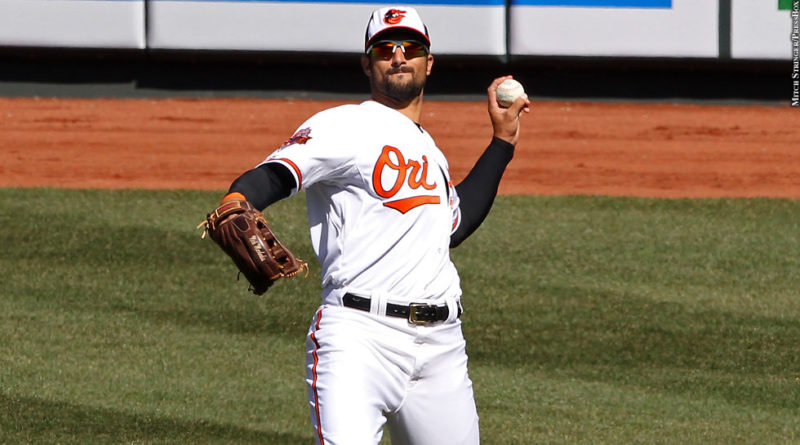It’s become as much an annual rite of spring as training camps, so it was hardly a surprise last week when baseball rolled out the latest list of “experimental” rules coming in varying degrees to the minor leagues this year.
The most anticipated but perhaps the one with the least consequences will affect only teams at the Triple-A level, where the bases will be enlarged from 15 to 18 inch squares, with a less slippery surface.
The idea for larger bases was mostly prompted by interference plays involving the batter-runner going to first base on soft hit balls in the vicinity of home plate, but in reality most likely will have only minimal consequences. It does give the first baseman more room to the inside of the field — but with the base still completely in fair territory it will likely have minimal effect on those plays, and will quite likely only increase the number of arguments.
Bigger bases will give infielders a better chance to avoid collisions, and with the 90-foot distance between bases reduced by three inches, runners get a finger-length break on stolen base attempts, neither of which should greatly impact the game.
The most controversial proposals are relegated to Double-A and Single-A leagues, where they are least likely to affect players who reach the major leagues this year.
In Double-A games all four infielders will be required to have both feet on the dirt — eliminating the short-right-centerfielder that has become prevalent in the big leagues. It is a much stronger compromise to one requiring two infielders on each side of second base. What it won’t do is curtail the “HR or K” swing mentality or encourage hitting to the opposite field.
The proposal at the High-A level is by far the most controversial — and the one that potentially could most drastically change the way the game is played. The “step off” rule will require the pitcher to step off the pitching rubber before attempting to pick a runner off base, In effect giving baserunners a green light to go on any other movement.
In effect the High-A rule proposal, if implemented, would make unnecessary the one at Low-A, where pitchers will be limited to two pickoff attempts per plate appearance. It will be a little dicey for pitchers moving from one level to the other this year.
With the hit-or-miss mentality so prevalent in today’s game, pitchers have gotten more lax when it comes to holding runners on base. But that hasn’t been enough to encourage the kind of running game these latest rules proposals would encourage.
The big question: Will speeding up the game, speed up the game?
* * *
Somehow or other the retirement of Nick Markakis fits right in with all the discussions about how the game should be played. Because, honestly, if everybody played the game the way he did we wouldn’t be having a lot of these discussions.
Not to say that his way was the only way — but it was a solid way. For 15 years Markakis was a dependable outfielder who could hit a home run, hit for an average, steal a base and play Gold Glove defense. His approach was simple enough that it would make one of those exaggerated shifts go away.
A pretty good career for a guy most teams scouted primarily as a pitcher. Baltimore was fortunate to have him for nine of those 15 years.
* * *
It’s been a challenge trying to get a read on spring training this year, but some things have become obvious. In the American League’s Eastern Division, the Yankees are going to be very good. The Orioles are not. Boston is in scramble mode. Toronto is the team of the future. Tampa Bay is dealing with a World Series hangover.
In the National League’s Eastern Division, Miami is still the unknown quantity. While most teams had played a dozen or more games, the Marlins had a 6-2 record with five ties — including what must be a spring-training record of four in a row — entering play March 16. That’s what happens when the length of games, some as short as five innings, are determined day by day, sometimes it seems hour by hour.
Along those lines it’s hard to understand the logic behind shortened games because of fewer pitchers in camp and then see teams, like the Orioles, send some pitchers to minor league camps without working an inning in the big-league camp.
It tells you something about the direction the game is going in when Jackie Bradley, Jr. signed what is now considered a modest two-year, $24 million contract with the Milwaukee Brewers that includes an player option for the second year. Fred Lynn, who patrolled the area in Fenway for a few years, described JBJ as “the best defensive centerfielder in Red Sox history,” but there was virtually no effort to keep him.
Meanwhile Bobby Dalbec, drafted by the BoSox in 2016, is being touted by some as “another Aaron Judge.” In 23 games with the Royals last year, Dalbec hit eight home runs in 80 at-bats and struck out 39 times. The Red Sox rookie records for home runs (34 by Walt Dropo, 1950) and strikeouts (152 by George Scott, 1966) are deemed to be in jeopardy.
Jim Henneman can be reached at JimH@pressboxonline.com
Photo Credit: Mitch Stringer/PressBox

